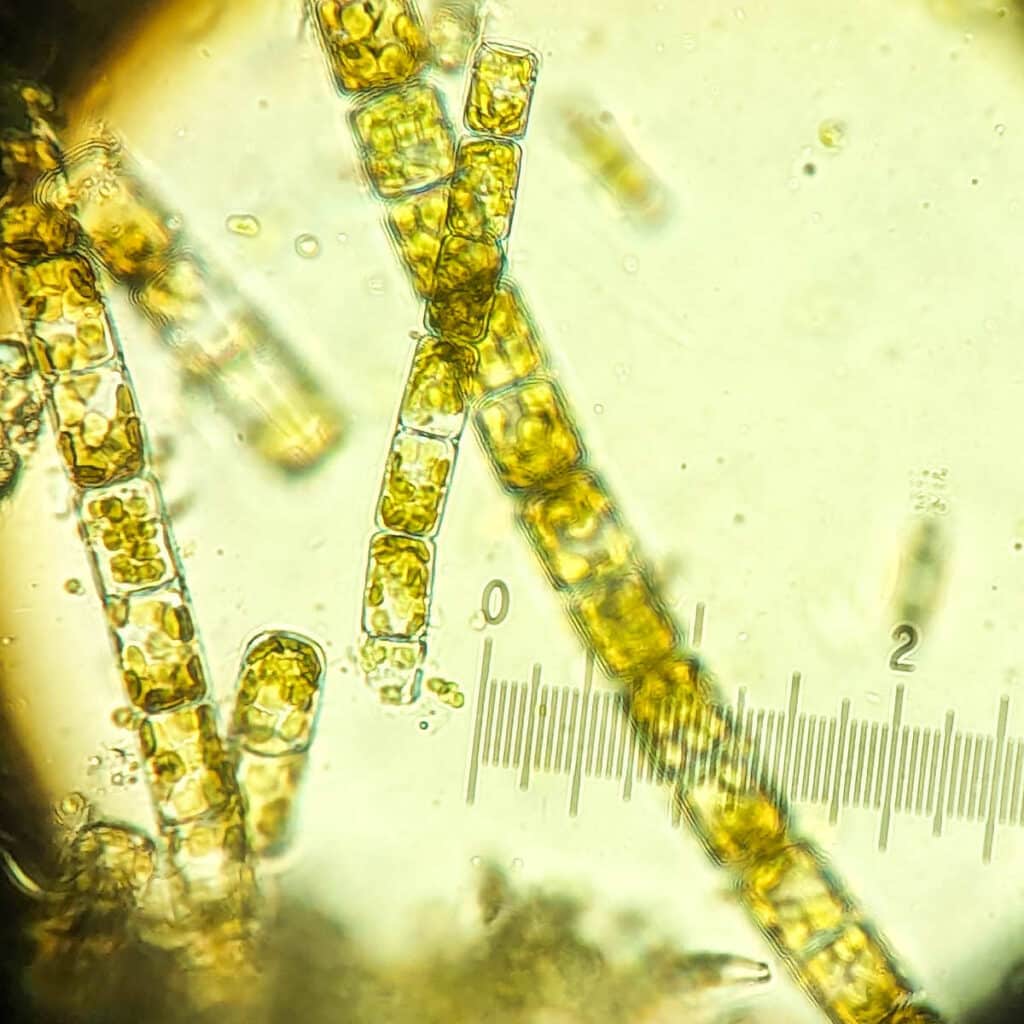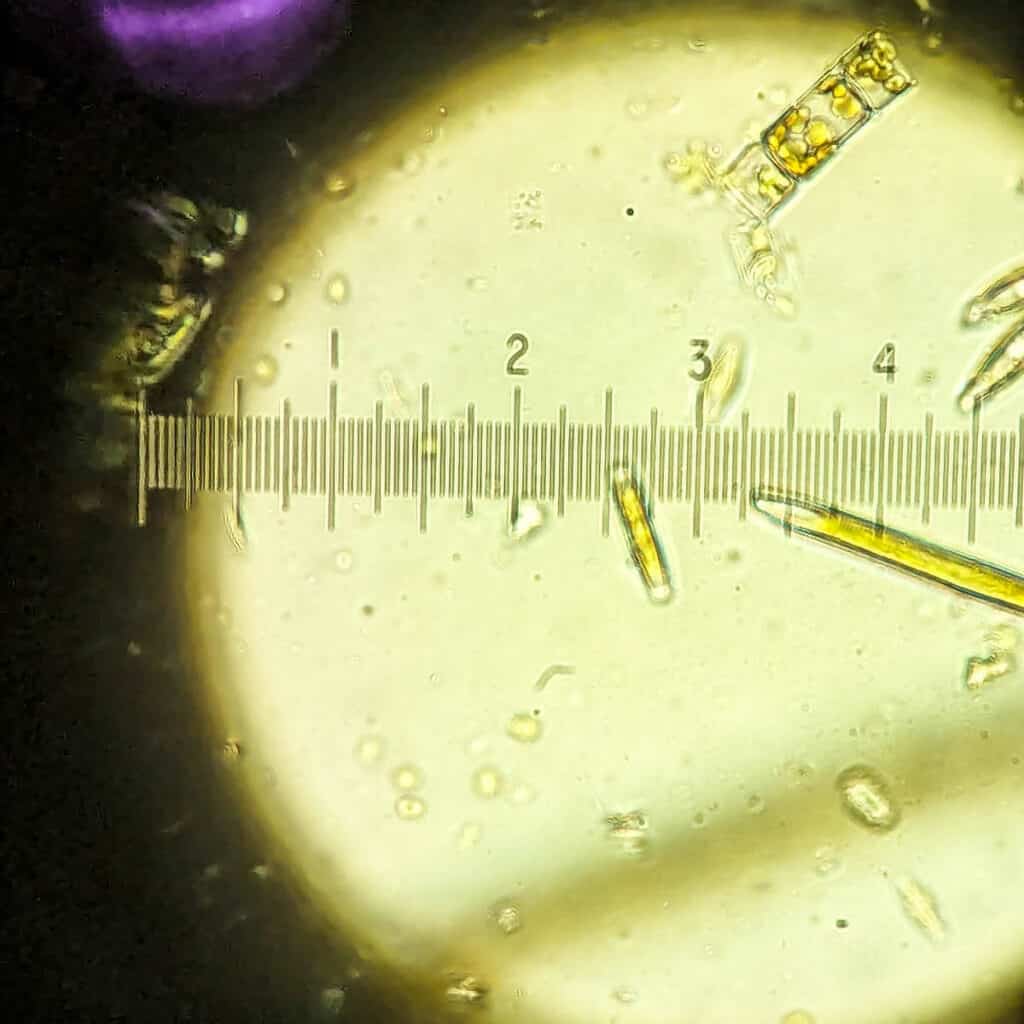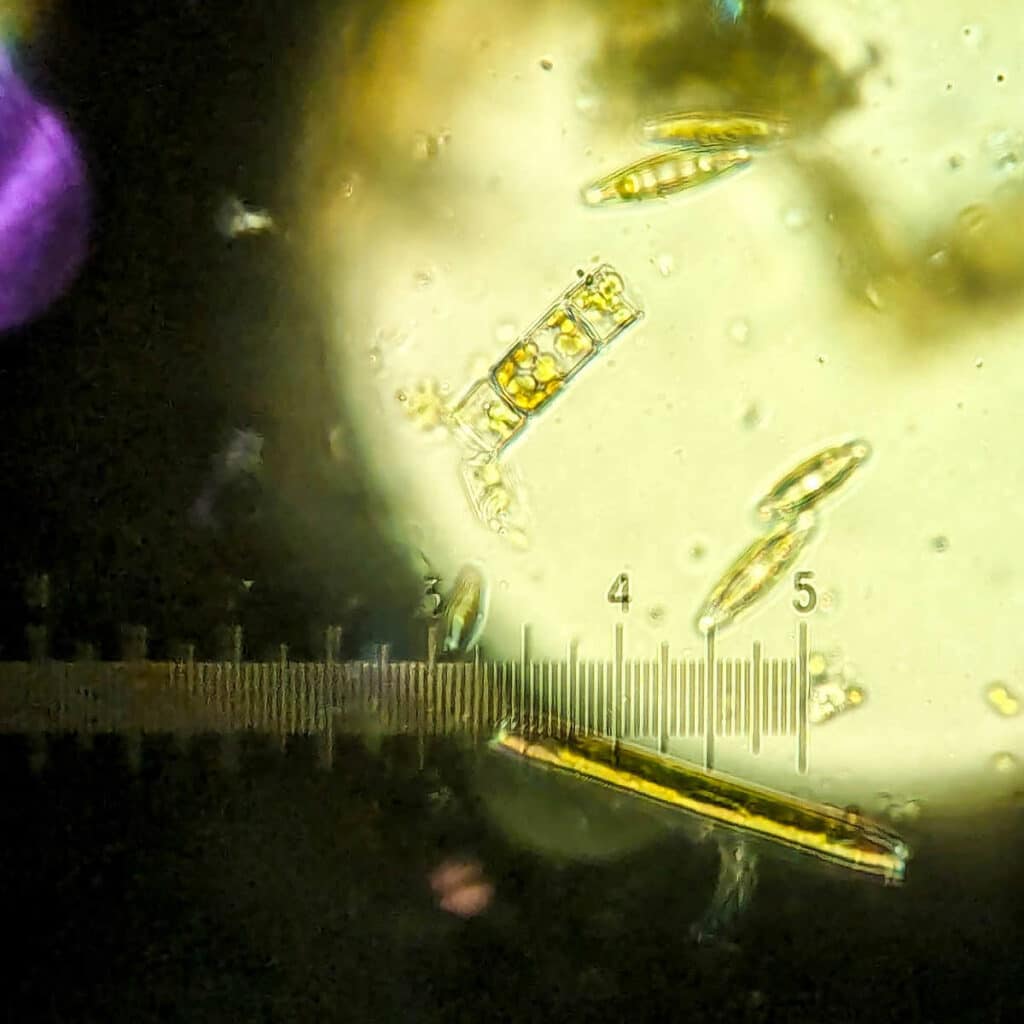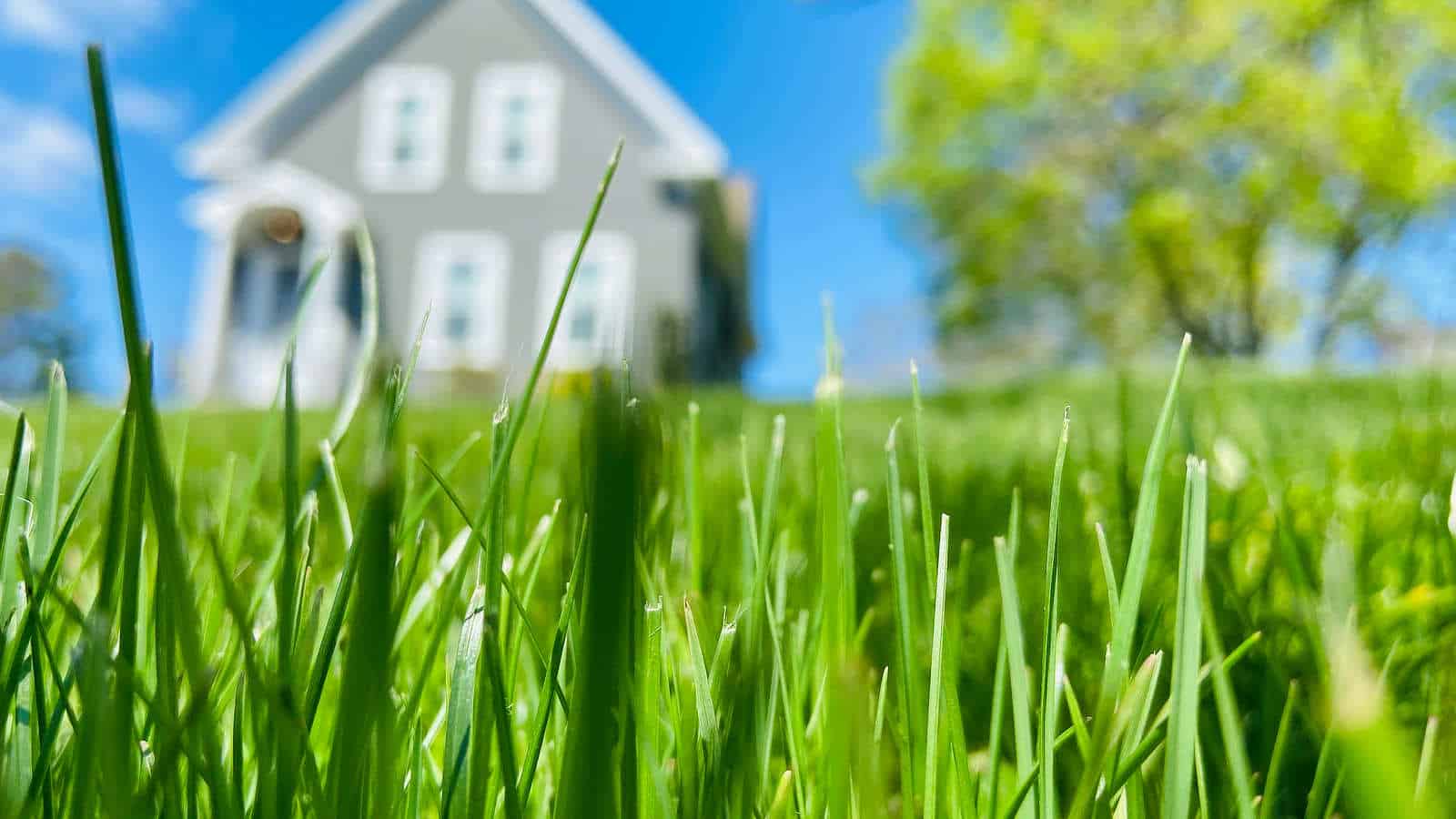Lawn Care Tips to Prevent Algal Blooms in Ponds, Creeks, and Rivers
Punxsutawney Phil’s prediction of an early spring was right: unseasonably warm temperatures are here, and that means algae are already blooming in southeastern Pennsylvania. In Chester County, the Valley Forge Chapter of Trout Unlimited alerted Stroud Water Research Center to an algal bloom in Valley Creek.



While not all algae are harmful — in fact, certain species feed aquatic organisms — too much, no matter the variety, can have negative consequences. Overapplication of fertilizers, warming temperature, and abundant sunlight are a recipe for algae outbreaks that can sicken humans and their pets, fish, and other aquatic life. Fueled by the extra nutrients in fertilizers that are applied to lawns, naturally occurring algae can grow into unsightly blooms; when they die back, they lower oxygen in the water, which can produce an unpleasant smell and harm fish and other aquatic life.
It’s also worth noting that turfgrasses, including lawn, occupy a land area three times larger than the No. 1 irrigated crop in the United States, which is corn, so their impact on water sources is significant.

None of the Valley Creek samples that Stroud Center scientists examined appeared to be highly toxic. Still, algal blooms can wreak havoc on water bodies and produce a scum that reduces the natural beauty of scenic waters.
Fortunately, homeowners can help prevent algal blooms:
- Test your soil: Before investing in fertilizers or other lawn treatments, test your soil to find out what, if anything, is needed. Your local cooperative extension service is a great place to start.
- Reduce fertilizer use: Avoid using too much fertilizer, avoid applying it before it rains, and avoid applying it near creeks and ponds. Limit the number of applications to only what’s necessary, and check with your local cooperative extension service about timing and frequency.
- Maintain vegetation around creeks and ponds: Planting native vegetation — especially perennials, trees, and shrubs — along streambanks and shorelines reduces the amount of nutrients that reach water bodies and feed algae. Trees are especially helpful, as they also provide shade that lowers the temperature of water, further reducing algal growth. For an even bigger impact, convert some of your lawn to native wildflowers and rain gardens, create berms to temporarily hold and infiltrate water, and connect downspouts to rain gardens.
- Properly dispose of pet waste: Animal waste contains nutrients that can contribute to algal growth, so it’s important to clean up after pets.
- Limit paved surfaces: Paved surfaces prevent rain from soaking into the soil and instead allow it to wash fertilizer off the land and into water bodies. Implementing rain gardens or permeable pavements helps capture and filter runoff, preventing nutrient-rich water from reaching nearby waterways.
- Maintain septic systems regularly: Ensure septic systems are properly maintained and inspected to prevent leaks or overflows that could introduce nutrients into groundwater and surface water. Check with your township about what’s required or recommended.
- Practice water conservation: Conserving water can reduce the likelihood of low water levels that concentrate nutrients and promote algal growth. Native plants can help conserve water as they generally have deeper roots, are heartier than many exotic species, and require less care. Many require no additional watering after they are established.
- Volunteer: Get involved in local watershed stewardship initiatives to plant trees or perform other water-friendly activities. Not sure where to start? Your local university or cooperative extension program can point you in the right direction. In Pennsylvania, check out Penn State Extension’s Master Watershed Steward Program or the Keystone 10 Million Trees Partnership.
- Speak with your lawn care company: Ask about their practices and if they are following Pennsylvania law for fertilizer application. How do they consider runoff and timing of treatment? How is their treatment improving the health and quality of your soil? If you suspend treatment, what can you expect? Will their treatment be sustainable or require a long-term commitment to their practices? Do they follow regenerative or sustainable practices?
By implementing these proactive measures, you can help prevent algal blooms while promoting safe and healthy waters.
Did You Know?
In 2023, Pennsylvania established a new turfgrass fertilizer law to protect waterways from the harmful overapplication of fertilizers. Application of fertilizers within 15 feet of a waterway, wetland, or pond is prohibited. Phosphorus must not be a component of turfgrass fertilizers (with some exceptions). For a review of the new law and implications for managing your turfgrass, visit Penn State Extension.



